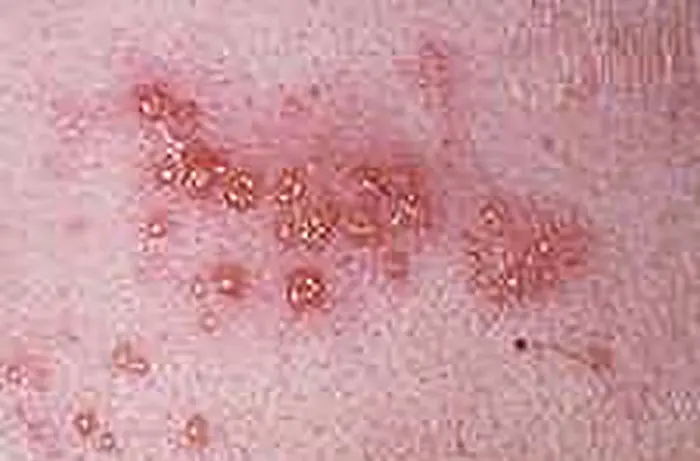Herpes Zoster or Shingles
Skin Conditions
Herpes zoster, also known as shingles, is a rash caused by the reactivation of varicella zoster virus (VZV) – the same virus that causes chickenpox. Only a person who has had chickenpox (or, in rare cases, just a chickenpox vaccine) can get shingles.
This virus can remain dormant for decades before it is reactivated, usually when the body’s immune system is compromised by aging, stress, HIV, or immunosuppressive drugs. Dormant VZV resides only in nerve fibers, and thus only the skin near the affected nerve develops a rash, leading to a characteristic pattern associated with shingles– usually a stripe across the left or right side of the back wrapping around to the chest or abdomen. However, most skin nerves (known as dermatomes) can host a VZV reactivation. Shingles rashes that involve the skin around the eye are particularly serious, as this can lead to permanent damage to the eye or even blindness. Only one nerve is typically involved, and it is rare to develop shingles more than once.
Once it is reactivated, a shingles rash can have up to three stages
- The first, known as the preeruptive phase, involves pain, itching, or numbness along the nerve that is beginning to develop shingles. This phenomenon is difficult to identify as the beginning of herpes zoster, and is often not recognized by either the affected person or medical professionals. This phase can last as long as 10 days, though it usually occurs over the course of 1-2 days.
- The second phase, called the acute eruptive phase, is when the shingles rash develops. It begins as redness along the nerve, followed by an eruption of blisters filled with clear fluid. These blisters eventually get cloudy, burst, and crust over. This process takes 10-15 days, though complete healing can take up to a month, and scarring is not uncommon. There is significant pain associated with this rash – almost always severe.
- The third phase, known as the chronic phase, does not occur in all cases, and is associated with nerve pain (called postherpetic neuralgia) along the area where the rash was present, even after it has healed. This pain can last for months or even years as it slowly resolves. It is not known why some people are afflicted by this third phase, but it is more likely to occur in the elderly, the immunosuppressed, in cases that involve the eye, and is less likely to occur if treated with anti-viral medication in the first or early-second stages.
Shingles, though painful, will almost always resolve on its own without treatment. However, it is important to seek medical attention if you think you have shingles, for antiviral medications can reduce the chance of developing the third chronic phase of this rash. This is especially true of rashes affect the skin around the eye, cases involving elderly or immunosuppressed patients, and rashes that affect more than one nerve. The pain associated with this rash can be managed with NSAIDs such as aspirin and ibuprofen and lotions such as calamine.
Shingles is contagious in that a person who has never had chickenpox or its vaccine can catch chickenpox from a person with an active shingles rash. This person may then develop shingles later in life.
Shingles can be prevented. You cannot get shingles if you never got chicken pox. Therefore, a childhood chickenpox vaccine is an excellent way to avoid shingles. Furthermore, there is an anti-shingles vaccine for adults – Zostavax. This vaccine has the same content as the childhood chicken pox vaccine at a higher dose. It is FDA approved for individuals over 50, so long as the immune system is not weakened by conditions such as leukemia, lymphoma, tuberculosis, or HIV. This vaccine reduces the occurrence of shingles by a little over 50%.


















